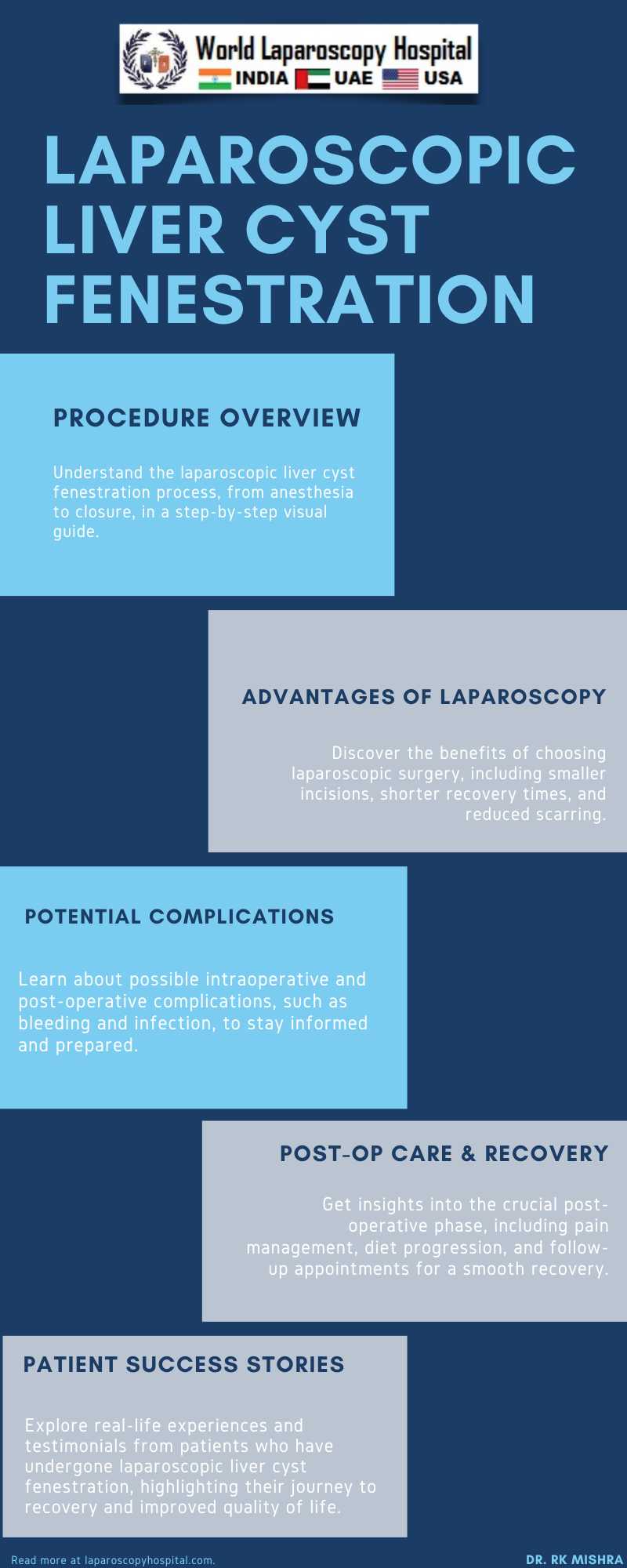Introduction:
Laparoscopic liver cyst fenestration, a minimally invasive surgical procedure, has emerged as a highly effective approach for managing liver cysts. Over the years, it has gained popularity among surgeons and patients due to its numerous advantages over traditional open surgery. In this comprehensive guide, we will explore the intricacies of laparoscopic liver cyst fenestration, from understanding liver cysts to the surgical procedure itself, and post-operative care.

Section 1: Understanding Liver Cysts
Liver cysts, also known as hepatic cysts, are fluid-filled sacs that can develop within the liver. These cysts can vary in size, from small and asymptomatic to large and causing discomfort. Understanding the types and characteristics of liver cysts is essential before delving into the surgical approach.
1.1 Types of Liver Cysts
- Simple Liver Cysts
- Polycystic Liver Disease
- Hydatid Liver Cysts
1.2 Causes and Symptoms
- Etiology of Liver Cysts
- Common Symptoms and Complications
1.3 Diagnosis
- Imaging Techniques
- Differential Diagnosis

Section 2: Indications for Laparoscopic Liver Cyst Fenestration
The decision to undergo laparoscopic liver cyst fenestration depends on several factors, including the size and location of the cyst, symptoms, and patient preference. This section will outline the key indications for this surgical procedure.
2.1 Size and Location of Liver Cysts
2.2 Symptomatic Liver Cysts
2.3 Patient Preference for Minimally Invasive Surgery
Section 3: Pre-operative Preparation
Preparation for laparoscopic liver cyst fenestration is crucial for a successful outcome. This section will guide both patients and healthcare providers on the steps to take before the surgery.
3.1 Patient Evaluation
- Medical History
- Physical Examination
- Imaging Studies
3.2 Informed Consent
- Understanding the Procedure
- Risks and Benefits
3.3 Pre-operative Testing
- Blood Tests
- Radiological Assessment
3.4 Dietary and Medication Instructions
Now, let's delve into the heart of this guide—the laparoscopic liver cyst fenestration procedure itself. This minimally invasive approach offers several advantages, and understanding the surgical steps is essential.
4.1 Anesthesia and Positioning
- Types of Anesthesia
- Patient Positioning
4.2 Trocar Placement
- Creating Portals for Instruments
4.3 Intraoperative Imaging
- Utilizing Laparoscopic Imaging
4.4 Fenestration Technique
- Excision of Cyst Wall
- Hemostasis
- Closure of Incisions
Section 5: Post-operative Care and Recovery
A successful surgery is followed by a critical period of post-operative care and recovery. Patients and healthcare providers should be well-informed about what to expect during this phase.
5.1 Immediate Post-operative Period
- Monitoring Vital Signs
- Pain Management
- Early Ambulation
5.2 Diet and Nutrition
- Transitioning from Liquid to Solid Diet
5.3 Follow-up Appointments
- Monitoring Healing Progress
- Managing Complications
Section 6: Potential Complications and Risks
While laparoscopic liver cyst fenestration is considered a safe procedure, it is essential to be aware of potential complications and risks that may arise during or after surgery.
6.1 Intraoperative Complications
- Bleeding
- Injury to Surrounding Organs
6.2 Post-operative Complications
- Infection
- Fluid Collection
- Recurrence of Cysts
Section 7: Benefits of Laparoscopic Liver Cyst Fenestration
Highlighting the benefits of laparoscopic liver cyst fenestration is vital for patients and healthcare providers alike. Understanding these advantages can help in making informed decisions.
7.1 Minimally Invasive Approach
7.2 Shorter Hospital Stay
7.3 Faster Recovery
7.4 Reduced Pain and Scarring
Section 8: Case Studies and Patient Experiences
Real-life experiences and case studies provide valuable insights into the effectiveness of laparoscopic liver cyst fenestration. In this section, we will explore some cases and hear from patients who have undergone the procedure.
Conclusion:
In conclusion, laparoscopic liver cyst fenestration is a safe and effective surgical option for managing liver cysts. This comprehensive guide has provided an in-depth understanding of the procedure, from its indications and benefits to potential risks and post-operative care. Patients and healthcare providers can use this knowledge to make informed decisions and ensure the best possible outcomes for those with liver cysts.
Endnotes
References
Glossary of Terms
Appendices (if applicable)
This comprehensive guide aims to serve as a valuable resource for both patients and healthcare providers seeking information on laparoscopic liver cyst fenestration. With the right knowledge and understanding, individuals can make well-informed choices regarding their liver cyst management and treatment options.